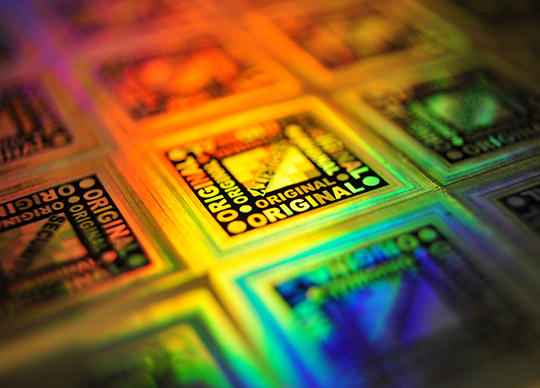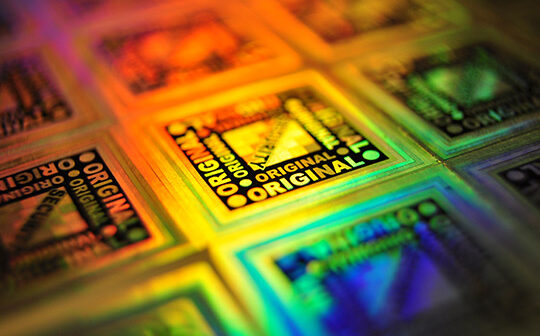
Holography is improving the collection of alcohol tax revenues in rural Asia, according to Dr Paul Dunn, chair of the International Hologram Manufacturers Association.
The application of holograms in national initiatives continues to deliver benefits for authorities looking to secure tax revenues. Indeed, the technology remains a steadfast weapon in the frontline battle against counterfeiters and fraudsters, protecting products right across the supply chain as part of effective authentication programmes.
“We are seeing innovative technologies and processes helping holograms to reach out into all sectors and applications where counterfeiting is an issue, broadening their appeal and securing new markets. For example, they are playing an integral part in helping authorities in India tackle the dark underbelly of the illegal alcohol trade, where authentication procedures may not be as strenuous as in other parts of the world and the dangers from criminal activities perhaps more acute.” said Dr Dunn.
The excise department in the northern Indian state of Rajasthan has issued orders that retailers must no longer accept stocks of liquor in the state that do not feature holographic labelling. The initiative aims to curtail illicit alcohol sales which are hitting hard the coffers of the regional exchequer. Implementation of the system will enable the excise department to track and trace each bottle and case of liquor from the distillery through the distribution warehouse to the retailer.
As the system is rolled out over the next few months, the distilleries and breweries will generate printed barcodes that contain unique serial numbers and information about the batch number along with production and expiry dates. Readers on the manufacturing line will record the exact number of bottles being produced while barcodes on each bottle and box will be scanned before stock is dispatched to the warehouse of a wholesaler on trucks affixed with RFID tags. In addition to the barcode, each bottle will have a digitally secured hologram attached.
Retailers will be provided with point-of-sale machines for reading the barcodes and generating customer bills to enable a track and trace mechanism, which will follow the beverage from the manufacturer to the final POS and confirm its authenticity to consumers.
The use of authentication solutions, as advocated by the ISO12931 standard, enables examiners to verify the authenticity of a legitimate product, differentiating it from fake products coming from counterfeiting hot spots in Asia and eastern Europe. Even those that carry a ‘fake’ authentication feature can be distinguished from the genuine item if that item carries a carefully thought-out authentication solution.
“The capacity for holography to incorporate other data forms and recognition information continues to grow in importance but for now it is clear the technology demonstrates an ability to thwart criminal activity and secure tax revenues in challenging and difficult to monitor sectors. With advancements in technology and widening applications, there’s no reason why the technology should not continue to play a critical part in the on-going battle to remain one step of ahead of the counterfeiters.” said Dr Dunn.






